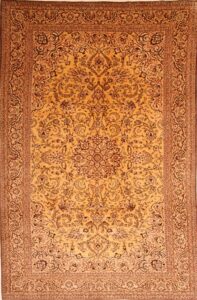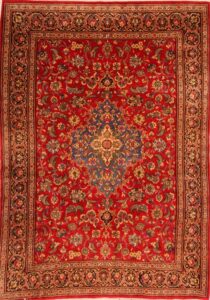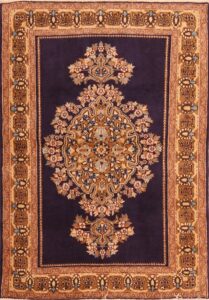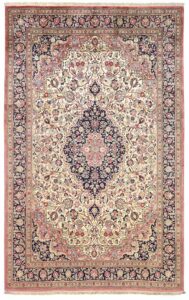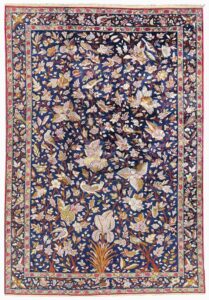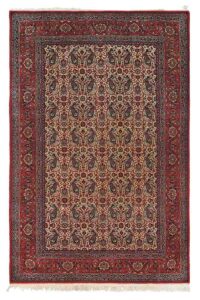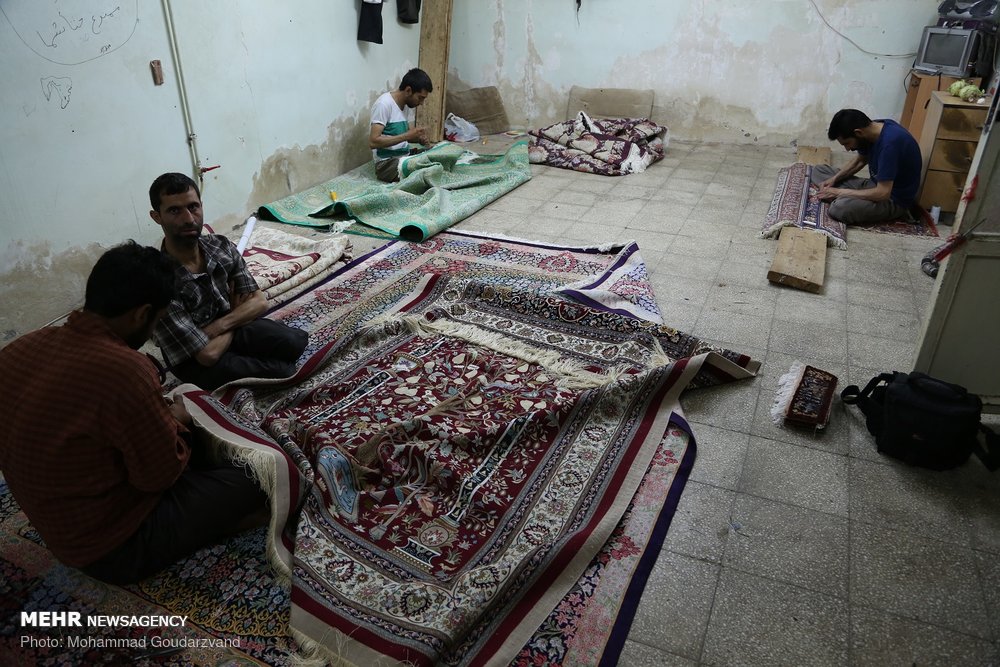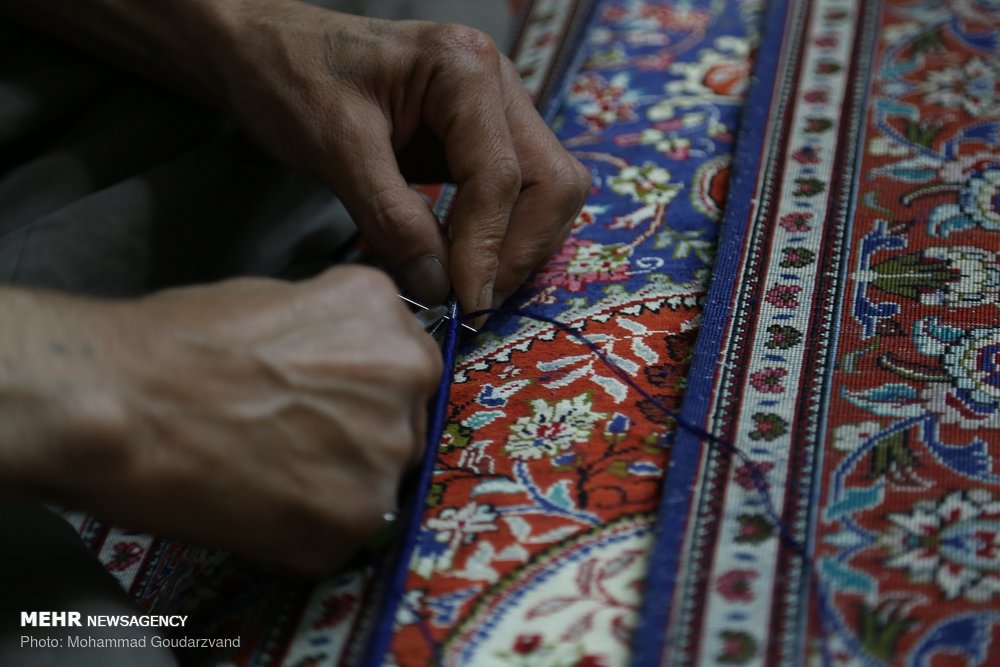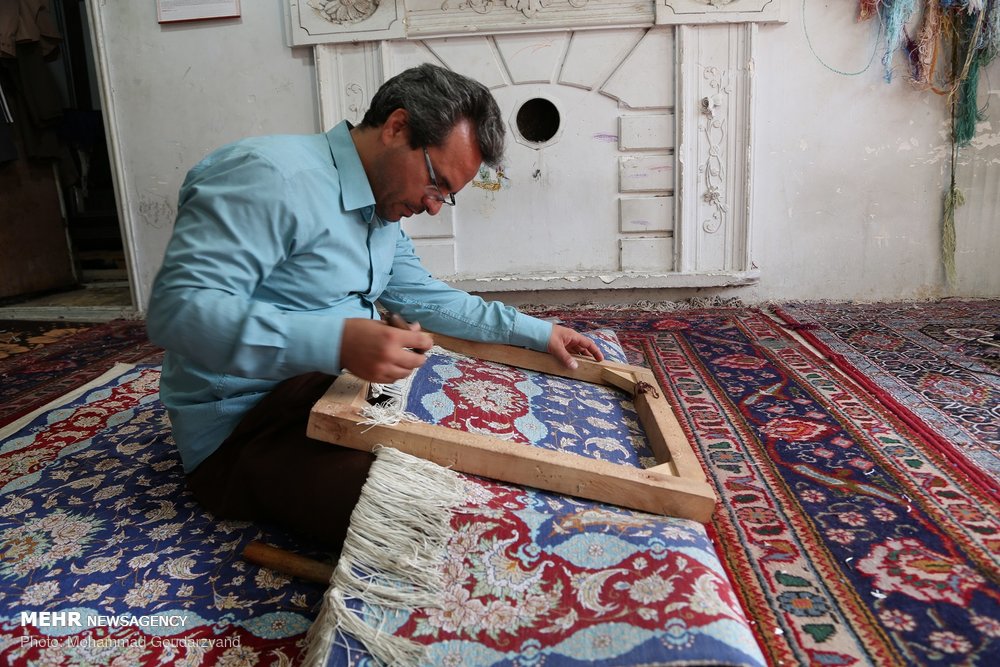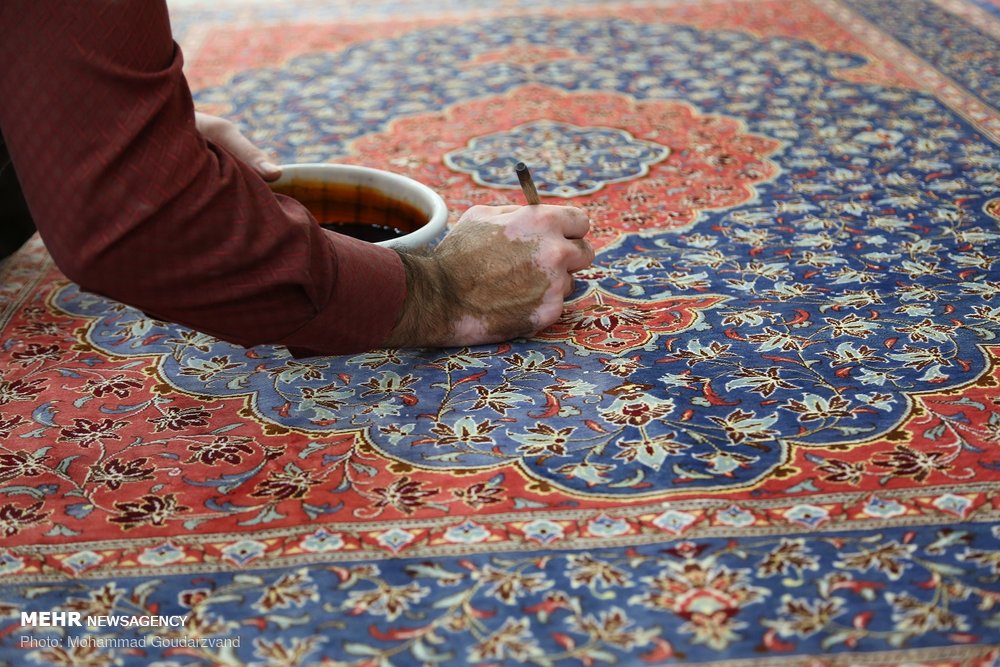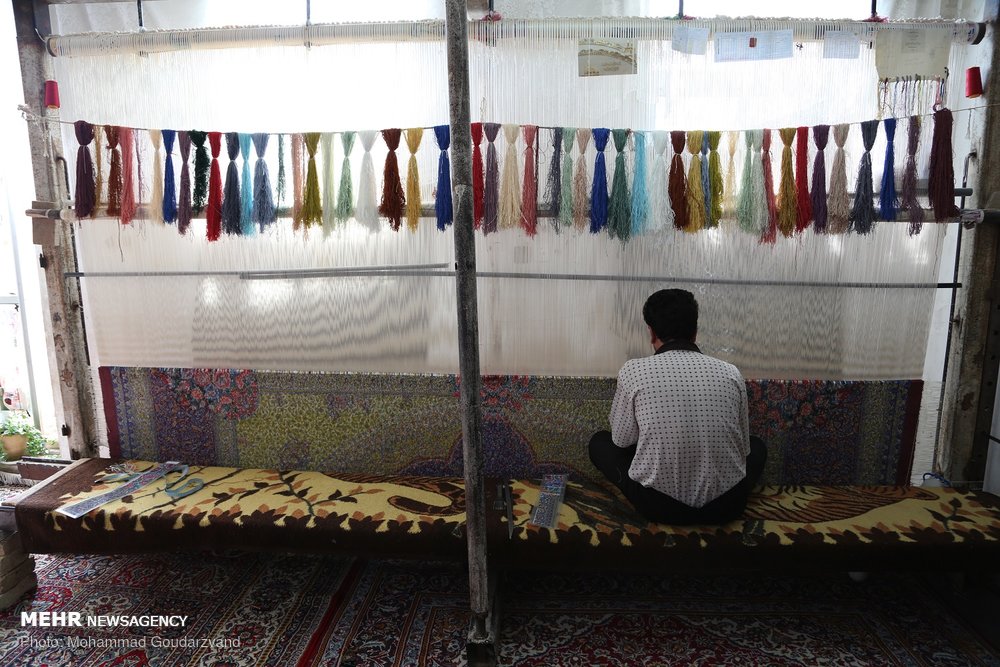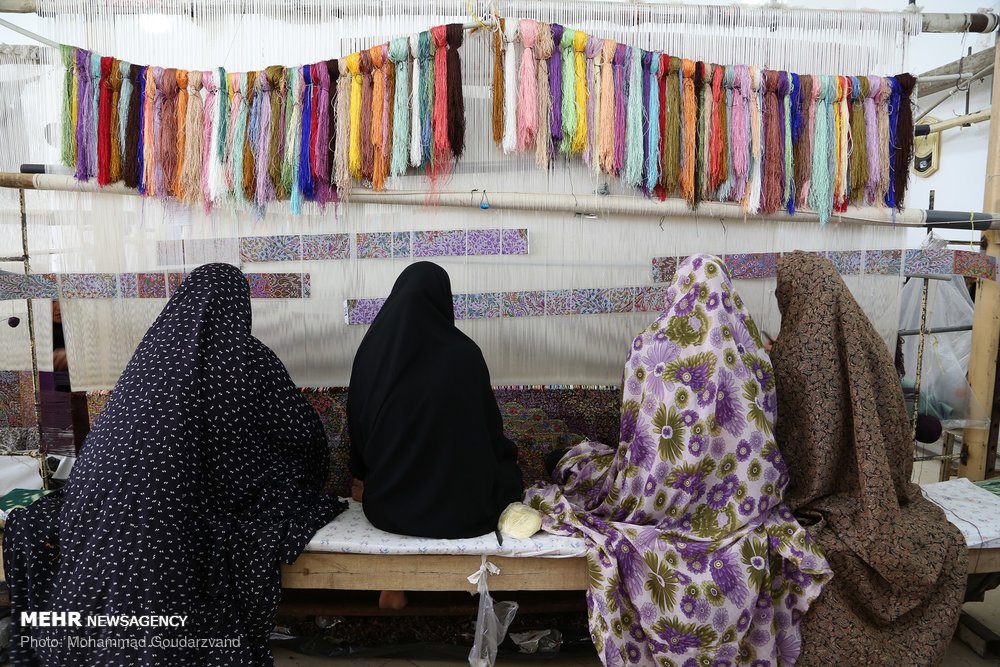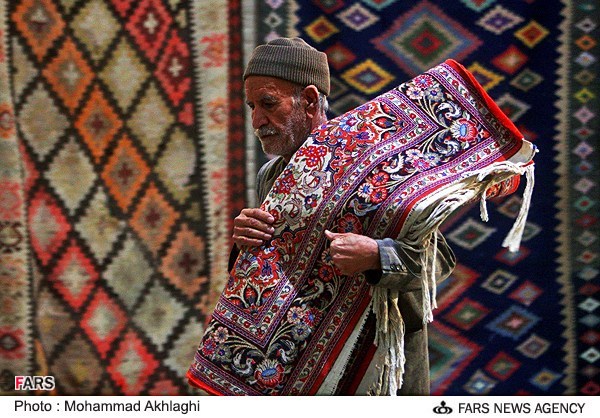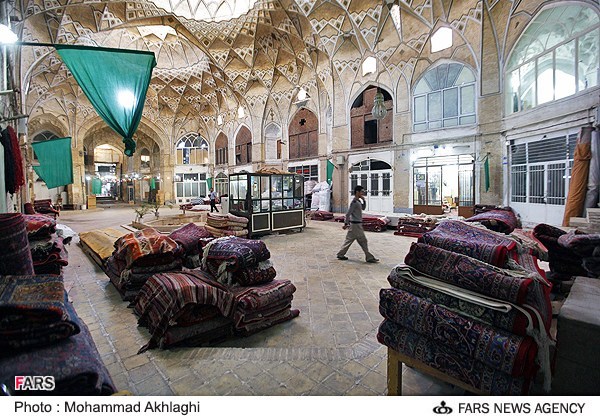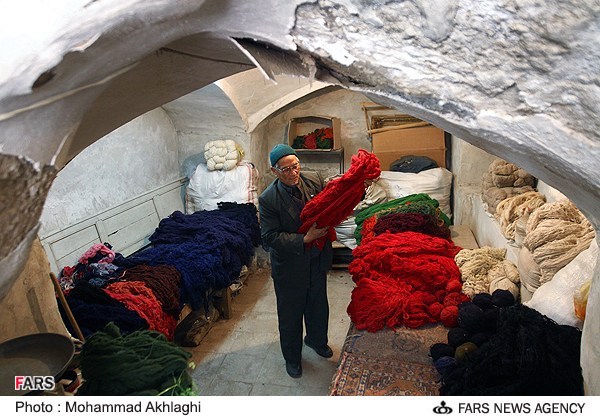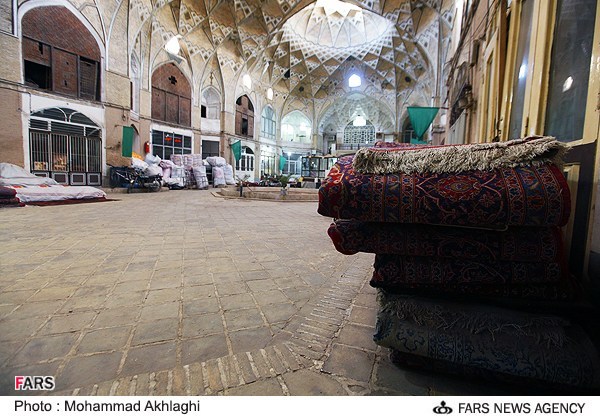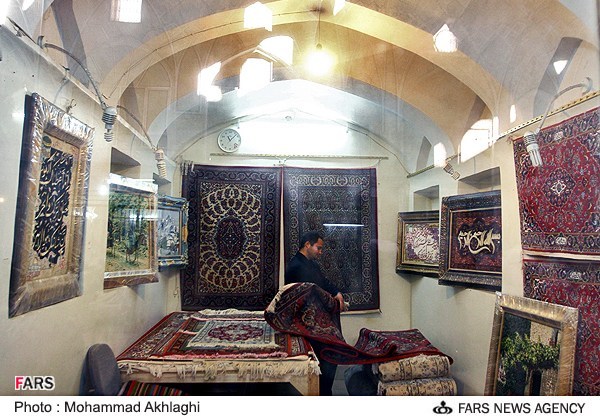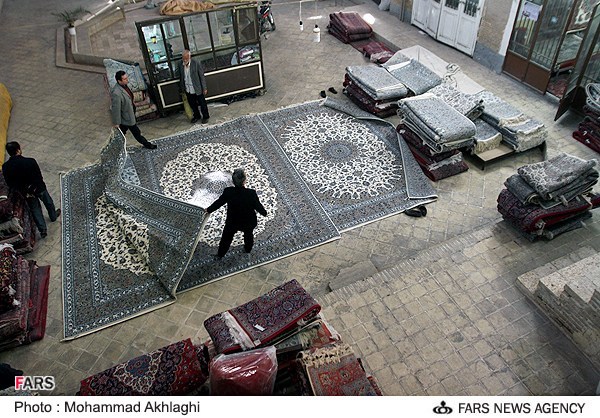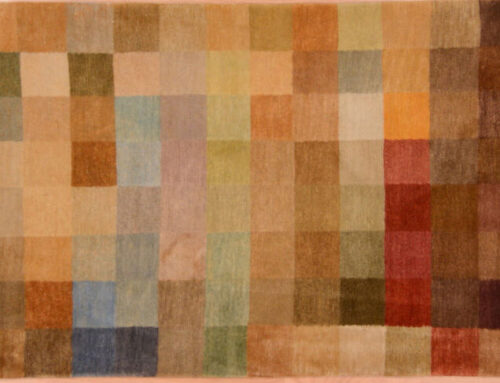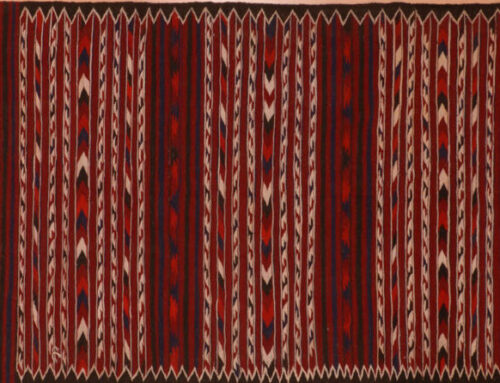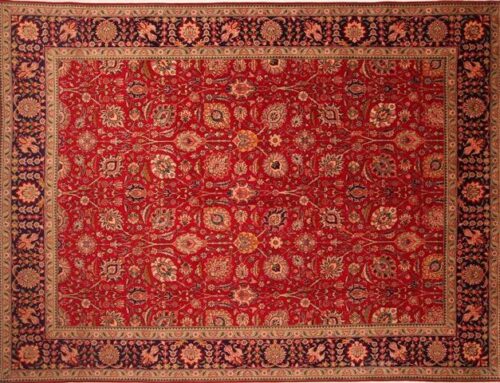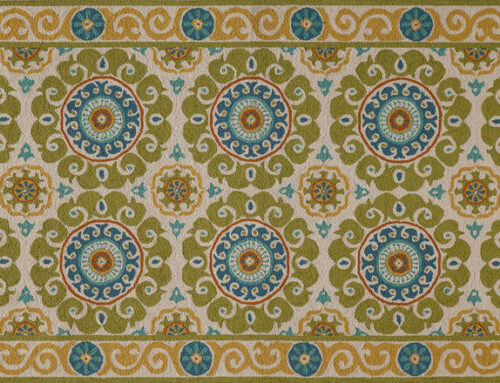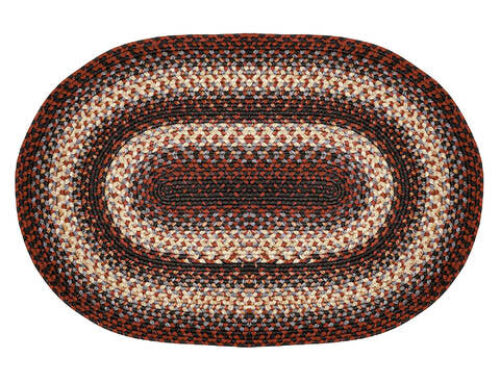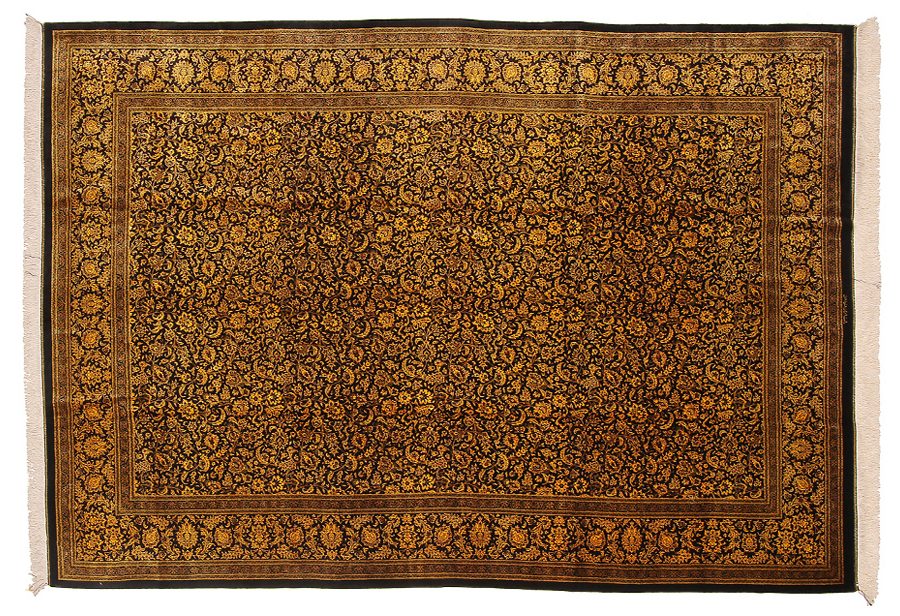
Origin of Qum Rugs
Persian rugs are among the finest handmade carpets in the world, if not the absolute finest. They are professionally woven by hand in the city of Qum, which is south of Tehran, Iran and renowned for its exceptional rugs. The carpet industry of this city is incredibly modern and greatly respected worldwide. The quality of an authentic Qum rug is extraordinary therefore, prices tend to be much higher than those made elsewhere (with the exception of Isfahan, Nain, Tabriz and a few other fine rug producing centers in Iran). One should also consider the fact that most Qum rugs take several years to complete. In some bigger pieces, it may take numerous expert weavers well over ten years to construct a single rug. There are some Qum rugs in the world today that cost several hundreds of thousands of dollars and sometimes well over a million.
History of Qum Rugs
Qum rugs are hand knotted in the city of Qum or nearby villages but mostly in Qum itself. Qum is located in the central Persia, approximately 120 km south of the Capital Tehran. The city of Qum was literally nonexistent until one of the grand daughters of Prophet Mohammad Dies in the desert of Qum while traveling to Khorasan to visit his exiled brother Imam Reza (died 823 A. D.), the eight Imam of Shi’i Muslims. As a saint and Daughter of an Imam her burial site becomes a shrine and one of the most visited and most respected holy sites in Persia. Gradually People moved around the shrine and a new city was born.
Characteristics of Qum Rugs
-
Material and Knots
The Qum rug is an example of astounding and excellent craftsmanship that one comes to expect from the Persian people of Iran. The makers of these rugs take such pride in their product, that they often weave their signature in a small part of the carpet’s border. Weaver signatures are found on extremely fine rugs made in other cities as well. There can be many different shapes and sizes in these rugs, including squares, rectangles, ovals, round rugs, or wall hangings, and the sizes may vary from a small mat to a rug the size of city block. The materials used can be wool, silk, or any combination of the two.
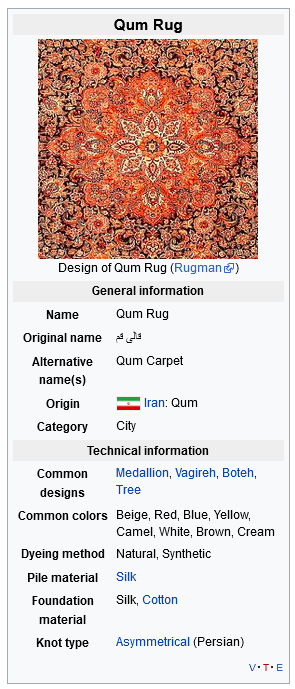
Qum Rug Infobox | © WikiRug
Qum hand knotted area rugs Particularly the silk on silk rugs are made with such a delicacy that astounds any lover of art who is familiar with hand knotted rugs. Qum silk rugs are so perfect that one would often wonder whether if it is possible to create such a magnificent piece of art by hand. Some Qum rugs are so fine that they almost look like a velvet fabric. They are the finest Persian rugs of all as they are certainly the finest hand made rugs in the world.
Qum Does Make Wool Rugs too A frequently questions asked about Qum rugs is whether Qum produces wool rug too. This is because most people familiar with hand knotted Rugs, particularly in Europe, United States, and Canada have only seen Qum silk rugs. The answer to this question is positive. However because most of the Persian rugs from Qum in Europe and North America are silk, and about %90 of all rugs made in Qum are exported to foreign countries, the assumption in the minds of non-Iranians is that Qum rugs are always pure silk. There are indeed wool rugs produced in Qum too; and Qum wool rugs are among the finest rugs and almost as fine as its silk rugs because those rug weavers are so used to weaving fine Silk rugs that even when they are weaving wool rugs, they fully apply their mastery in crating those rugs.
Qum rugs are so admired in the Western world particularly by celebrities and well known people and wealthy class of the American and European countries that it consists about %10 of all the rugs exported from Persia. The most active era of fine rug weaving In Qum started around 1920 where the European and American market shifted to demanding the finest Persian rugs. Around that time some Kashan rug weavers established few workshops in Qum and employed master weavers who had learnt the rug weaving in Kashan, Isfahan and Arak. The area was already using silk as an accent in their rugs and Qum almost from the beginning used more and more silk in the hand woven rugs and eventually started pure silk rugs on silk foundation.
Shapes and Sizes Qum Rugs come in variety of Shapes. Most common shapes in Qum rugs are rectangular, square, and round. However, finer rugs are often used as luxury decorative items and thus sometimes are produced in unusual shapes. Therefore it is possible to find almost unusual dimensions in Qum rugs.
-
Color
Qum silk rugs sometimes include more than 40 distinct colors and as the visual effects of combination of different adjacent colors are taken into consideration, more than 90 colors appear in fine pure silk rugs of Qum. This however doesn’t mean that all Qum rugs have these numbers of colors. Designers sometimes chose fewer colors as some high class clients prefer more subtle colors and matching tones particularly for modern settings.
-
Design and Pattern
The Rug weaving art may have been introduced to Qum from surrounding cities such as Kashan and Isfahan and Arak, as early as several hundred years ago; but Qum did not gain fame as center of making finest Persian Rugs until about until the second decade of 20th century about 80 years ago. Since then Qum hand knotted rugs constantly excelled and moved towards perfection. The Qum doesn’t have a distinct pattern so it produces a variety of beautiful rugs, with numerous exiting designs. Frequently, ancient and established designs of historic carpets are reproduced in Qum. Today, Qum has one of the most modern rug weaving industries in all of Asia.


